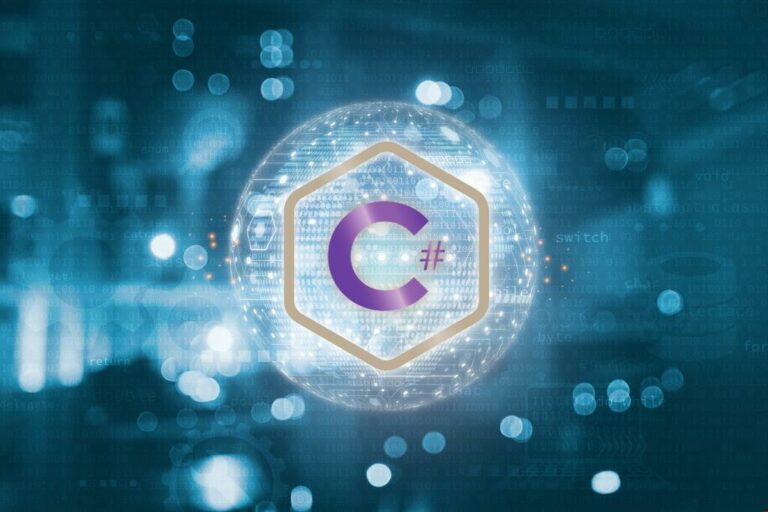Content
- How to adapt software security best practices to blockchain
- What Is Blockchain?
- Blockchain and Hyperledger
- Q9. Why is Blockchain Important?
- Binance Oracle Ready To Bridge Blockchains and Web3 Smart Contracts With Off-chain Data
- Blockchain.
- Making sense of bitcoin, cryptocurrency and blockchain
- Web & mobile app for crypto on the go
Alternatively, you could buy stock from companies that offer crypto services and investing. Interest in cryptocurrencies, which has spread due to mainstream attention, has also helped fuel interest in blockchain tech. Investing in blockchain this way is also an easy way of learning about crypto without gambling on the coins themselves. There are a couple of ways of investing in blockchain technology — some direct, others not so much. Once a block has been created, it cannot be altered, securing the information within it. Moreover, the decentralized nature of most blockchains makes them immune to takeovers or corruption by a central entity.

“It remains to be seen when and if regulators like the SEC will take action. One thing is evident—the goal will be to protect markets and investors,” he says. Given that blockchain depends on a larger network to approve transactions, there’s a limit to how quickly it can move.
How to adapt software security best practices to blockchain
When the first block of a chain is created, a nonce generates the cryptographic hash. The data in the block is considered signed and forever tied to the nonce and hash unless it is mined. The nonce — “number used only once.” A nonce in blockchain is a whole number that’s randomly generated when a block is created, which then generates a block header hash. Digital assets are decentralized, allowing for real-time accessibility, transparency and governance amongst more than one party.
Therefore, to change one block, a hacker would have to change every other block that comes after it, which would take a massive amount of computing power. Ethereum blockchain is a widely used, open source and custom-built blockchain platform considered to be an industry-leading choice for enterprise applications. The block is permanently chained to all previous blocks of Bitcoin transactions, using a cryptographic fingerprint known as a hash, and the sale is processed. Blockchain is the core technology behind Bitcoin and thousands of cryptocurrencies and has promising potential beyond digital currencies.
- What you own is a key that allows you to move a record or a unit of measure from one person to another without a trusted third party.
- In fact, blockchain has continued to progress solutions and address business needs with other technologies, such as artificial intelligence , the Internet of Things , and machine learning.
- Clearly, starting small is a good way to develop the know-how to think bigger.
- For cryptocurrencies like bitcoin, the blockchain is used to store transaction data.
- Banks and financial institutions across the globe continue to be leaders in blockchain adoption.
- Some networks, such as the Ethereum network, also allow users to build decentralised software applications on the blockchain, and add ‘smart contracts’.
Proof of Stake , algorithms that are commonly used as alternatives to PoW. They work by having validators invest in the currency of the system by keeping some of their coins as stake. These steps take place in close to real time and involve a range of elements.
What Is Blockchain?
Blockchain is often called a ledger because it catalogs all the transactions in a single network. Blockchain is also known as a distributed ledger technology because its records are shared and synchronized across a host of independent computers and are accessible by multiple people. This is different from centralized ledgers, which are more prone to cyber attacks and fraud because they have a single https://globalcloudteam.com/ point of failure. Each cryptocurrency has its own, unique blockchain where transactions are combined into blocks and then linked together. For example, the Bitcoin blockchain and Ethereum blockchain do not interact. The cryptographic nature of blockchain networks minimizes the risk of your financial information or identity being compromised, allowing for anonymous and more secure transactions.

In a public blockchain, anyone can participate meaning they can read, write or audit the data on the blockchain. Notably, it is very difficult to alter transactions logged in a public blockchain as no single authority controls the nodes. Blockchain is the innovative database technology that’s at the heart of nearly all cryptocurrencies. By distributing identical copies of a database across an entire network, blockchain makes it very difficult to hack or cheat the system. While cryptocurrency is the most popular use for blockchain presently, the technology offers the potential to serve a very wide range of applications. Blockchain, sometimes referred to as distributed ledger technology , makes the history of any digital asset unalterable and transparent through the use of a decentralized network and cryptographic hashing.
Blockchain and Hyperledger
It removes the need for clearinghouses and other settlement agents, while generally reducing costs and improving the speed at which transactions can be made, verified, settled, and recorded. Because the Bitcoin blockchain technology is not centralized, if one part of it went down, the whole network would not collapse. Researchers have created many variations on the basic blockchain architecture. Many include innovations to support faster processing, greater scalability, or lower transaction fees. Consensus mechanisms, coordination of subordinate subchains, private blockchains, and other key technologies are being addressed in projects across the crypto world.
The maths involved means that hashes are difficult to generate, but easy for other computers to verify. Consensus is achieved when a majority of computers have verified the new block and updated their copy of the blockchain file. Each block in the chain contains some data and a ‘hash’ – a digital fingerprint that is generated from the data contained within the block using cryptography. Ethereum is also a top choice for corporations looking to implement token-based economies. For example, a company might implement a loyalty program in which customers receive Acme Coins with every purchase. Then there could be a gift shop in which Acme Coins could be traded for benefits.
The reason why Blockchain is distributed is because of shared communication and distributed processing. The future of blockchain in the financial services industry relies on our ability to test and learn. And this also includes sharing learnings with other players in the market, including with regulators, as this helps spread understanding of the technology. Early investors can make a lot of money on blockchain networks and related stocks as the industry develops over the long haul, but every name won’t be a guaranteed winner. A sensible blockchain investor should approach this evolving sector with diversification and careful ticker-picking in mind. The blockchain technology offers new methods for authentication and authorization.
Q9. Why is Blockchain Important?
To validate new entries or records to a block, a majority of the decentralized network’s computing power would need to agree to it. To prevent bad actors from validating bad transactions or double spends, blockchains are secured by a consensus mechanism such as proof of work or proof of stake . These mechanisms allow for agreement even when no single node is in charge. The goal of blockchain is to allow digital information to be recorded and distributed, but not edited.
An eagerly anticipated upgrade of the Ethereum system, known as Ethereum 2.0, is expected to be capable of handling 10,000 transactions per second, up from its current rate of 30 per second. In countries and regions with poor or corrupt financial institutions, cryptocurrencies based Tech Trends on blockchain protocol allow the transfer and holding of cash that bypasses unscrupulous third parties. Bitcoin, blockchains now power thousands of cryptocurrencies, and developers are working on integrating the technology into businesses, including medicine, art and finance.

Join Public and gain the tools and confidence to start trading cryptocurrencies, stocks and other top markets. Typically, the block causing the error will be discarded and the consensus process will be repeated. Once a block has been added, it can be referenced in subsequent blocks, but it cannot be changed. The update is distributed across the network, which finalizes the transaction. This information may be different than what you see when you visit a financial institution, service provider or specific product’s site. All financial products, shopping products and services are presented without warranty.
Binance Oracle Ready To Bridge Blockchains and Web3 Smart Contracts With Off-chain Data
In our analysis, history suggests that two dimensions affect how a foundational technology and its business use cases evolve. The first is novelty—the degree to which an application is new to the world. The more novel it is, the more effort will be required to ensure that users understand what problems it solves. The second dimension is complexity, represented by the level of ecosystem coordination involved—the number and diversity of parties that need to work together to produce value with the technology. For example, a social network with just one member is of little use; a social network is worthwhile only when many of your own connections have signed on to it.
Blockchain.
As described in Blockchain for Dummies, “Blockchainowes its name to the way it stores transaction data—inblockslinked together to form achain. Blocks record and confirm the time and sequence of transactions, which are then logged into the blockchain, within a discrete network governed by rules agreed to by the network participants. Another option is to invest in blockchain companies using this technology. For example, Santander Bank is experimenting with blockchain-based financial products, and if you were interested in gaining exposure to blockchain technology in your portfolio, you might buy its stock.
A blockchain is a distributed ledger that duplicates and distributes transactions across the network of computers participating in the blockchain. Normally, each block contains the data it is recording, for example a transaction like 1 Lisk token being sent from Alice to Bob, as well as timestamps of when that information was recorded. It will also include a digital signature linked to the account that made the recording and a unique identifying link, in the form of a hash , to the previous block in the chain. It is this link that makes it impossible for any of the information to be altered or for a block to be inserted between two existing blocks. As a result, each block strengthens the previous block and the security of the entire blockchain because it means more blocks would need to be changed to tamper with any information. From a business perspective, it’s helpful to think of blockchain technology as a type of next-generation business process improvement software.
Stellar offers its own virtual currency, lumens, and also allows users to retain on its system a range of assets, including other currencies, telephone minutes, and data credits. Stellar initially focused on Africa, particularly Nigeria, the largest economy there. It has seen significant adoption among its target population and proved its cost-effectiveness. But its future is by no means certain, because the ecosystem coordination challenges are high. Although grassroots adoption has demonstrated the viability of Stellar, to become a banking standard, it will need to influence government policy and persuade central banks and large organizations to use it. In Australia, there are a number of utility companies using blockchain-enabled technology.
Because the system is decentralized, you can’t call a central authority, like your bank, to ask to regain access. A private blockchain, meanwhile, is controlled by an organization or group. Only it can decide who is invited to the system plus it has the authority to go back and alter the blockchain. This private blockchain process is more similar to an in-house data storage system except spread over multiple nodes to increase security. Tokens can be music files, contracts, concert tickets or even a patient’s medical records. Each NFT has the ability to verify authenticity, past history and sole ownership of the piece of digital media.
Verifying candidates’ qualifications and experience can be a time-consuming process, especially now – when candidates may work for multiple employers, take on gig assignments, and move between jobs more frequently. A single blockchain for recording education levels, certifications achieved, employment history, and other qualifications could provide a way for HR professionals to verify career credentials more efficiently. There are already blockchain-based tracking systems that allow healthcare providers, pharmacies, and pharmaceutical sellers to authenticate drug shipments. Global pharmaceutical companyBoehringer Ingelheimis using one such system to authenticate pharma products and help combat counterfeits.
By August 2014, it had reached 20 gigabytes, and eventually exceeded 200 gigabytes by early 2020. Blockchain technology is not a company, nor is it an app, but rather an entirely new way of documenting data on the internet. The technology can be used to develop blockchain applications, such as social networks, messengers, games, exchanges, storage platforms, voting systems, prediction markets, online shops and much more. In this sense, it is similar to the internet, which is why some have dubbed it “The Internet 3.0”. Blockchain technologies are growing at an unprecedented rate and powering new concepts for everything from shared storage to social networks.
